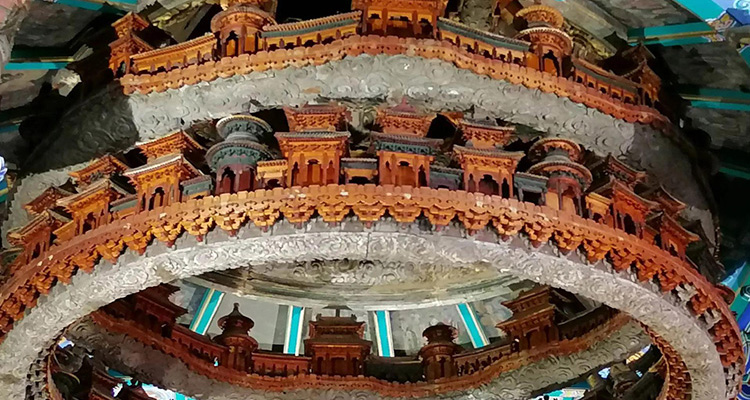The Caisson Ceiling of Beijing Xiannongtan: A Perfect Fusion of History and Art
The Caisson Ceiling of Xiannongtan in Beijing is a remarkable example of ancient Chinese architectural art. Located within the historic Altar of Agriculture (Xiannongtan), this caisson not only showcases the craftsmanship of traditional artisans but also embodies profound symbolic meanings and engineering mastery. It is a must-visit destination for travelers eager to explore Beijing’s cultural heritage. Below is a comprehensive guide to its design, experience, and practical visitor information.
1. Design Highlights
The caisson ceiling of Xiannongtan was originally designed during the Ming and Qing dynasties by royal architects responsible for imperial sacrificial buildings. Its structure reflects the ancient Chinese philosophy of harmony between heaven and humanity. The caisson features a multi-layered circular design decorated with exquisite dragon and phoenix motifs and colorful cloud patterns, symbolizing imperial power and good harvests. Measuring approximately 10 meters in diameter and over 5 meters in height, it achieves a sense of grandeur and solemnity. The design’s symmetry and layered composition give visitors an immediate impression of historical depth and artistic refinement.

2. Engineering Innovations
Structurally, the caisson ceiling demonstrates groundbreaking use of traditional wooden joinery techniques, built entirely without nails or rivets — relying solely on interlocking mortise-and-tenon joints. Crafted from premium nanmu wood and enhanced with colorful paintwork, the materials are highly durable and resistant to aging. The multi-tiered structure effectively balances load-bearing and seismic performance, showcasing the architectural ingenuity of early Chinese builders. Thanks to these innovations, the caisson remains intact after several centuries, serving as a living example of ancient Chinese architectural engineering.

3. Visitor Experience
The Xiannongtan caisson offers different visual experiences throughout the day. During daylight, sunlight filters through the carved sections, casting intricate shadows and creating a peaceful, sacred atmosphere. At night, under warm illumination, the ceiling glows with a mystical golden radiance, ideal for photography and cultural exploration. Visitors can enter the Taisui Hall, where the caisson is located. The hall is not a commercial venue like a mall or hotel, but rather a cultural exhibition space dedicated to ancient Chinese sacrificial rituals and architecture. Here, visitors can closely observe the caisson’s details and experience the harmony between art and tradition.

4. Photography & Check-in Tips
As one of Beijing’s iconic landmarks, the Xiannongtan caisson is a popular social media hotspot. The best photo angle is directly beneath the caisson, capturing its majestic dome structure. The outer courtyard also provides great backdrops featuring traditional architecture for vintage-style photos. Since the site is often featured on Instagram and Xiaohongshu (RED), it’s best to visit early in the morning or late in the afternoon to avoid crowds and enjoy a more tranquil experience.
5. Practical Information
The surrounding area of Xiannongtan is quiet and pleasant, adjacent to the Xiannongtan Park with convenient facilities such as rest areas, souvenir shops, and public restrooms. Tickets cost around RMB 20, available online through the official website or via QR code at the entrance (digital payments accepted). Located in Xicheng District, Beijing, it’s easily accessible by public transport — take Subway Line 1 to Nanlishilu Station, then walk about 10 minutes. Driving is possible, though public transportation is recommended due to limited parking. The site is open daily from 9:00 AM to 5:00 PM; no reservation is required, but expect possible crowd limits on holidays.

6. Why Visit?
The Xiannongtan Caisson Ceiling is more than a masterpiece of architecture — it’s a window into ancient Chinese civilization. Its unique design, innovative engineering, and rich cultural symbolism make it a place where history, art, and spirituality intertwine. Whether you are a history enthusiast, a photography lover, or a traveler seeking tranquility, this hidden gem in Beijing offers an unforgettable experience. Come and explore the timeless beauty where history meets art!


